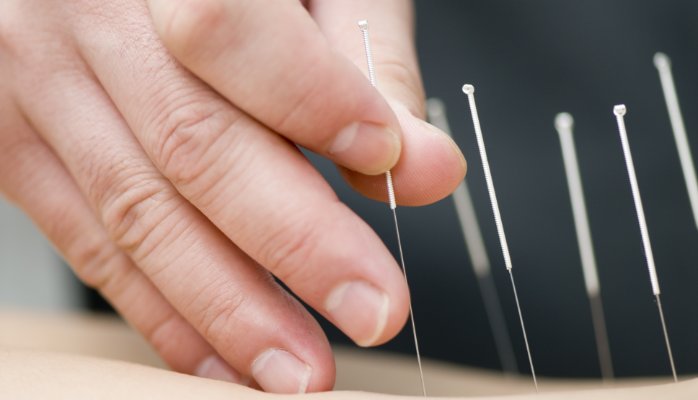Laughing gas. Acupuncture. Energy healing. Music therapy. These are just a few of the alternative pain treatments being used in emergency departments today to help curb the opioid epidemic.
With the Center for Disease Control’s recent recommendation that primary care providers should try “nonpharmacologic and nonopioid therapies” prior to prescribing narcotic pain relievers to patients, it’s now time for EDs across the country to begin exploring other pain relief options.
For many patients, their first introduction to powerful pain relievers begins in the ED. Medications such as Percocet and Vicodin provide swift and efficient pain relief, but for some, the social, economic and health costs prove too great. Possible dependence and death are just two of the consequences.
So what can emergency departments do to help curb opioid use and dependence? I recently wrote about a few strategies EDs can implement to combat the opioid epidemic. One strategy not mentioned was the use of alternative therapies, which is beginning to catch on as recent news reports and studies highlight their potential efficacy.
The New York Times recently profiled the emergency department at St. Joseph’s Regional Medical Center in Paterson, NJ, which is ahead of the curve when it comes to providing alternative therapies for patients presenting with chronic or acute pain.
The story highlights St. Joe’s use of a variety of alternative pain relief techniques, such as nitrous oxide and non-opioid analgesics, to reduce its reliance on opioids, while still providing effective pain relief to its patients.
“In five months, the hospital has reduced opioid use in the emergency department by 38 percent. St. Joe’s has treated about 500 acute pain patients with non-opioid protocols. About three-quarters of the efforts were successful.” — The New York Times
Success like that warrants deeper investigation so let’s look at two alternative therapies St. Joe’s, and other EDs in the U.S., are using to provide quality care and pain relief to its patients.
1. Nitrous Oxide
Nitrous oxide, better known as laughing gas, has a long history of delivering safe, non-addictive pain relief. As described by the Times, it’s “short-acting, mildly sedating, noninvasive and has countless applications in the ER.” There are few things that can put a smile on a patient’s face while they have a dislocated joint manipulated back into place.
In a report published in the Emergency Medicine Journal nearly 15 years ago, nitrous oxide is described as having all the characteristics of an “ideal analgesic agent.” It’ safe, predictable, non-invasive, free from side effects and simple to use with rapid onset and offset.
And here are a few instances, according to this report, where nitrous oxide may prove effective:
- Relief of pain from musculoskeletal injuries
- Reduction of joint dislocations
- Adjunct to other analgesia in forearm fracture manipulation
- Adjunct to lignocaine (lidocaine) in laceration repair
- Adjunct to other analgesia in wound care and abscess drainage
- Myocardial chest pain
- Migraine
So why are we now just rediscovering the benefits of nitrous oxide for treatment of pain? As this 2002 report notes, newer approaches were threatening its use. One can only think, those “newer approaches” were being delivered in the form of opioids.
2. Acupuncture
Like nitrous oxide, the use of acupuncture within the ED setting is proving to be an effective alternative to opioid pain relievers.
Take the emergency department at Abbott Northwestern Hospital in Minneapolis, Minn. as an example. Two years ago, it was the first ED in the country to have an acupuncturist on staff, and in March of this year the Star Tribune reported “that pain scores in those who received acupuncture alone dropped by the same amount as those who also received analgesic painkillers.”
While studies regarding the effectiveness of acupuncture as a pain reliever are inconclusive, it does “show promise” in alleviating pain among patients in the ED and may be a safe alternative to opioids. Researchers, the Star Tribune reports, hope to prove conclusively that acupuncture relieves pain, reduces costs and should be covered by insurers.
Nitrous oxide and acupuncture are just two alternatives to being used by emergency departments today to limit opioid use and dependence. The results and stories of success are promising, but it will take more than just a simple adoption of these strategies to curb the opioid epidemic. As the stories from St. Joseph’s and Abbott show, emergency departments, and the healthcare industry as a whole, will have to transform the culture of care and pain management to reduce the reliance on opioids.
If you’re interested in learning more about the role emergency departments can play in fighting the opioid epidemic, don’t hesitate to drop me a line. You can also visit the Donovan + Partners website to learn more about the services we offer.
Sources:
Centers for Disease Control and Prevention: “CDC Guideline for Prescribing Opioids for Chronic Pain | Guideline Information for Providers.”
The New York Times: “An E.R. Kicks the Habit of Opioids for Pain.”
American Academy of Pain Medicine: “Acceptability, Adaptation, and Clinical Outcomes of Acupuncture Provided in the Emergency Department: A Retrospective Pilot Study.”
The Star Tribune: “Abbott pioneers acupuncture in the ER.”

